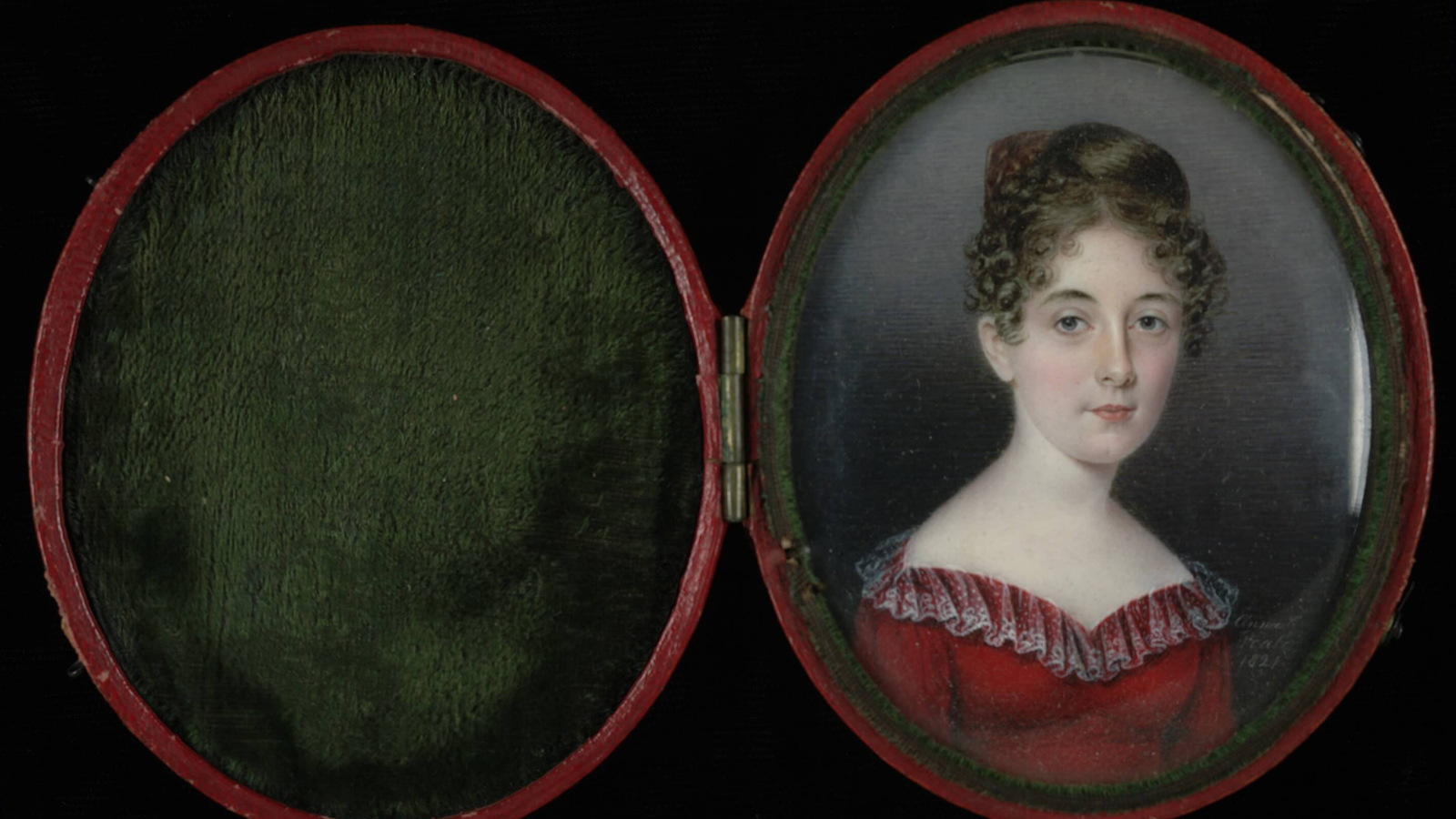Summary
- The Peale family was an American artistic dynasty that included many female painters.
- These talented women worked in still life, portraiture, and sometimes other genres.
- Except for the most successful two or three, the female artists of the Peale family aren’t well-known or studied today.
- Find their works in northeastern American museums, especially in Philadelphia.
I’m not a big fan of discussing female artists (and women in general) based on their relationships to the men in their lives and I would never do so normally. In an article about an artistic dynasty, however, it seems relevant and even necessary to explain who was related to whom.
Sarah Miriam Peale and Anna Claypoole Peale
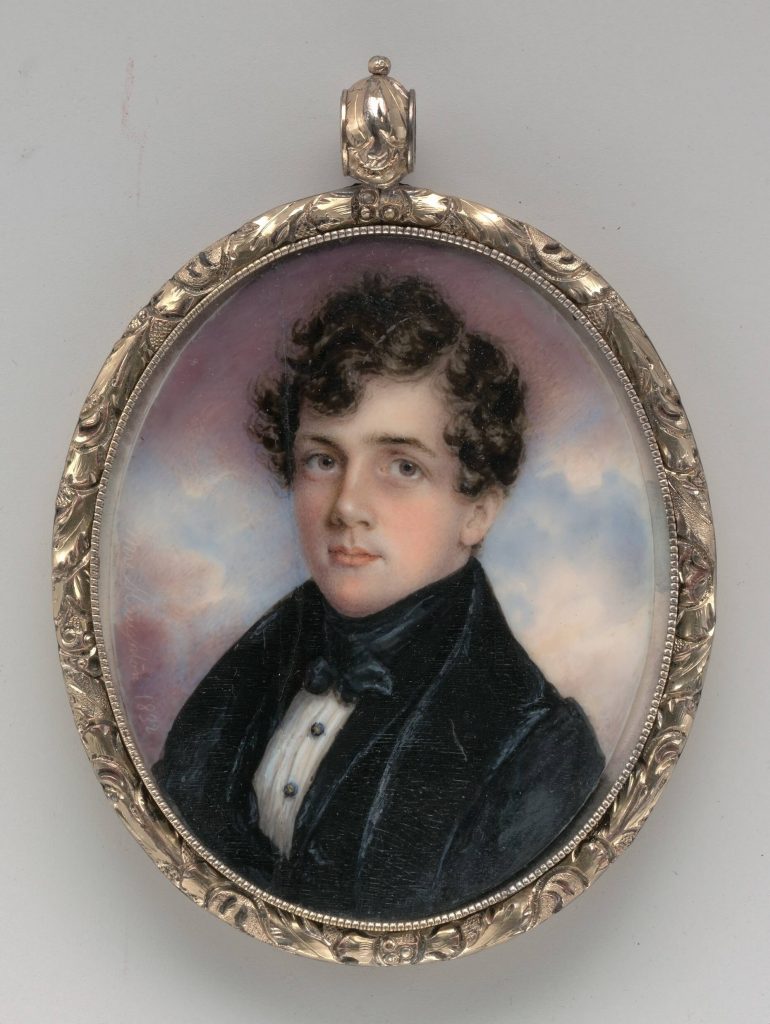
Anna Claypoole Peale, Portrait of a Gentleman, 1832, Metropolitan Museum of Art, New York, NY, USA.
Charles Willson Peale named four of his daughters after celebrated female artists, but none became artists themselves. Instead, the most famous female artists of the Peale family were Sarah Miriam Peale (1800-1885) and Anna Claypoole Peale (1791-1878), daughters of Charles Willson’s younger brother James. These two sisters became members of the Pennsylvania Academy of the Fine Arts in 1824 – the first women to ever gain membership (the Peale family was closely associated with Philadelphia, and many Peale family members have works in Pennsylvania museum collections). Both were portrait painters, but Anna Claypoole was a miniaturist- she painted tiny portraits in watercolor on ivory. Her works were encased in little lockets meant to be worn around the neck. Although not as prestigious as larger oil portraits, portrait miniatures were in high demand during the 19th century. In particular, they served as portable mementos of loved ones before photography took that role.
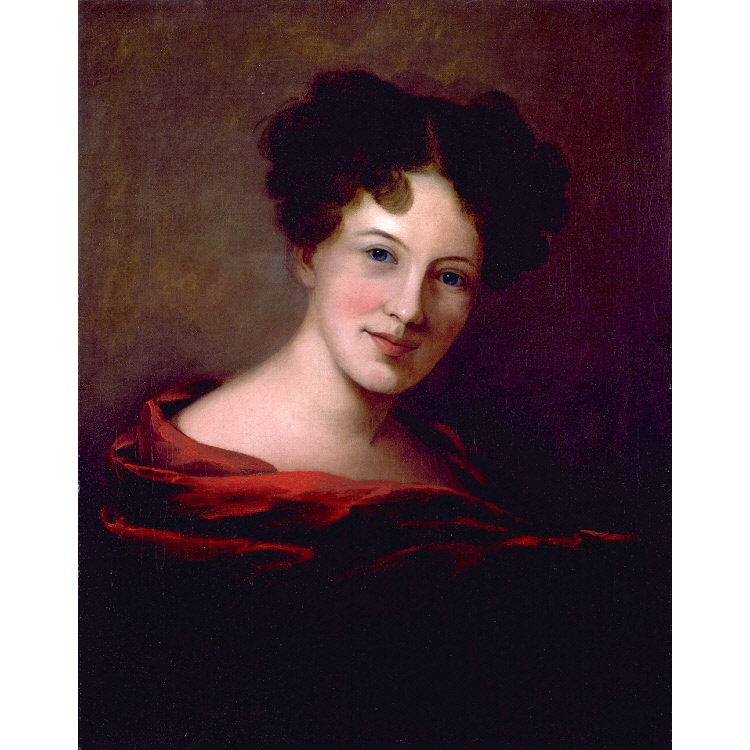
Sarah Miriam Peale, Self Portrait, c. 1818, National Portrait Gallery, Washington, DC, USA.
Sarah Miriam, by contrast, painted more traditional oil portraits on canvas and still lifes. Both sisters found great success as portrait painters, receiving commissions to portray many prominent Americans up and down the east coast. Anna Claypoole painted more than 200 portrait miniatures, including several American presidents. Sarah Miriam completed over 100 oil portraits in her lifetime and successfully competed for commissions with the most famous male portraitists of her day.
Margaretta Angelica Peale and Maria Peale
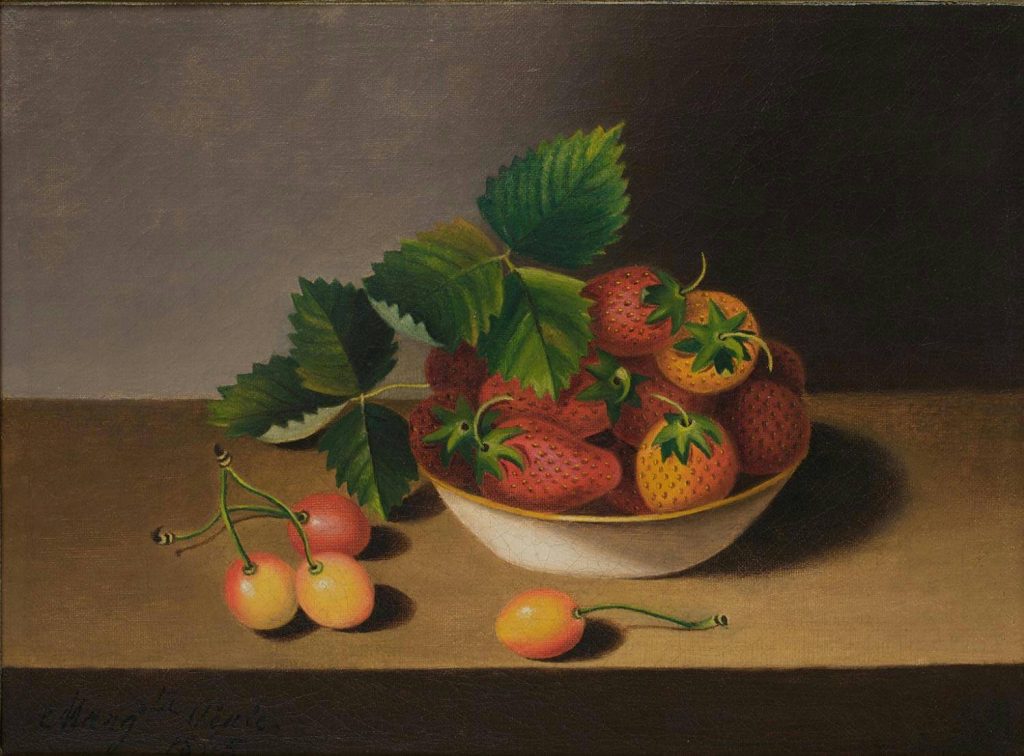
Margaretta Angelica Peale, Still Life of Strawberries and Cherries, 1865, Philadelphia Museum of Art, Philadelphia, PA, USA.
James Peale’s other daughters, Margaretta Angelica Peale (1795-1882) and Maria Peale (1787-1866), were still life painters and did not achieve as much acclaim as their sisters. Several of Margaretta Angelica’s works, typically depicting arrangements of fruit, live in American museums today. Maria only exhibited her work once as far as we know, and no surviving paintings are firmly attributed to her today.
Harriet Cany Peale
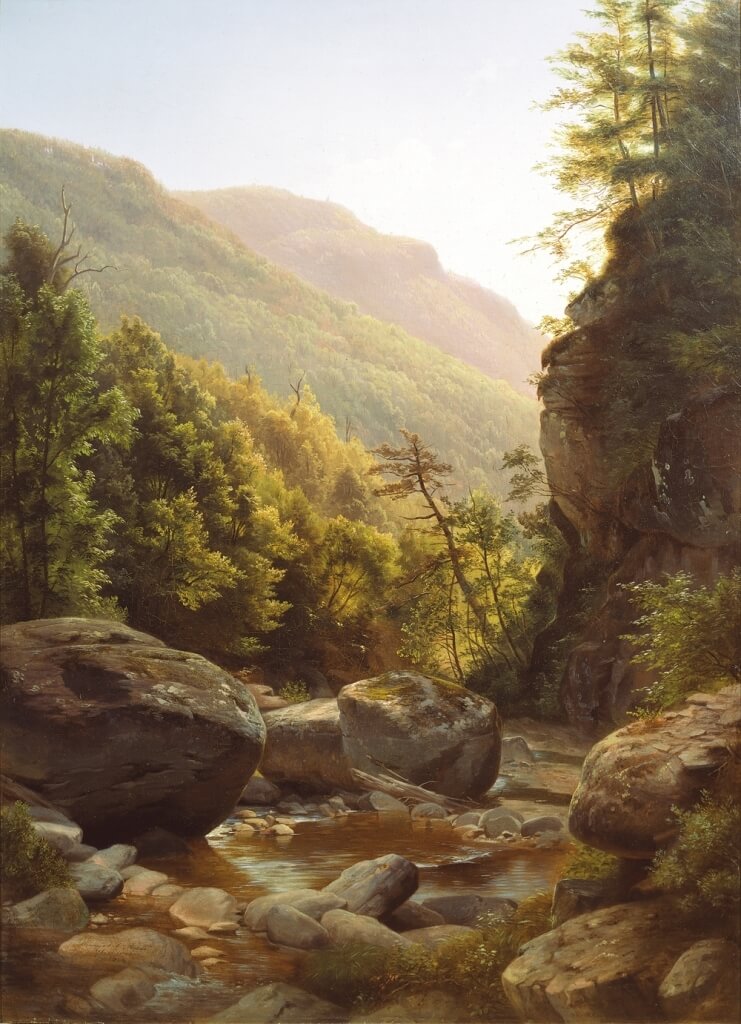
Harriet Cany Peale, Kaaterskill Clove, 1858, private collection. Photo via Wikimedia Commons (public domain).
Harriet Cany Peale (1800-1869) was a female artist of the Peale family by marriage. She joined the dynasty upon becoming the second wife of Charles Willson Peale’s son Rembrandt in 1840. Rembrandt was also a successful artist, and Harriet had been his student prior to their marriage. Like the rest of the Peales, Harriet was a portrait and still life painter (all members of the family painted in one or both of these genres). She also painted landscapes and genre scenes, which was unusual for a Peale. She is considered a member of the Hudson River School, a group of landscape painters who depicted northeastern American scenery. After Anna Claypoole and Sarah Miriam, Harriet Cany has the longest-lasting reputation of all the female artists of the Peale family. Examples of her diverse subjects appear in various museums in the eastern United States.
Rosalba Carriera Peale
Rosalba Carriera Peale (1799-1874) is the most likely to have her works confused with a male family member’s – specifically her father’s. She was the granddaughter of Charles Willson Peale through his son Rembrandt, who was himself a very successful artist. Harriet Cany Peale was her step-mother. Rosalba should not be confused with her aunt of the same name, who was not an artist.
By all accounts, Rosalba Carriera Peale was a intelligent, skilled, and successful artist who worked in multiple genres, yet I could not find a single work that is firmly attributed to her. All the works associated with her name online are credited as her father’s portraits of her.
Mary Jane Simes
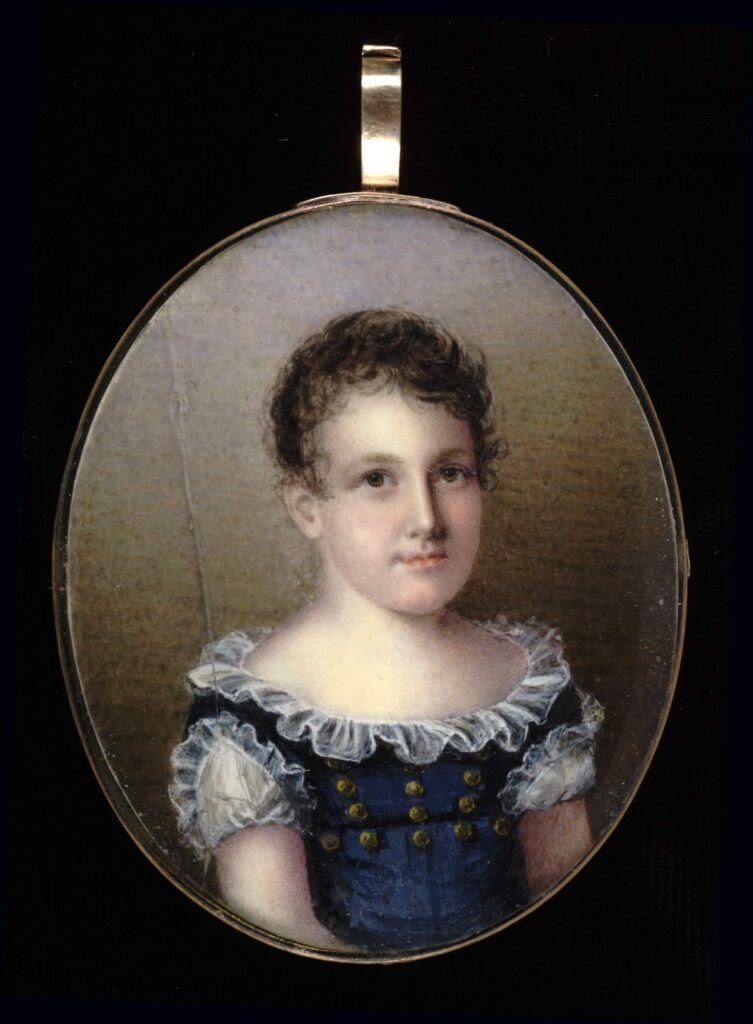
Mary Jane Simes, Portrait of a Young Girl, 1825, watercolor miniature on ivory, Smithsonian American Art Museum, Washington, DC, USA.
One of the two female artists of the Peale family not to actually carry the family name, Mary Jane Simes (1807-1872) was the granddaughter of James Peale through his daughter Jane Ramsay Peale. Jane was James’s only child not to become an artist. Mary Jane Simes had a short career; she only exhibited her work from 1825 until her marriage in 1836. She painted portrait miniatures like her Aunt Anna, who was her teacher. Scholars believe that this example depicts one of her young relatives. Other examples of her work live in the Cincinnati Museum of Art in Ohio, and the Cheekwood Estate and Gardens in Nashville, Tennessee.
Anna Peale Sellers
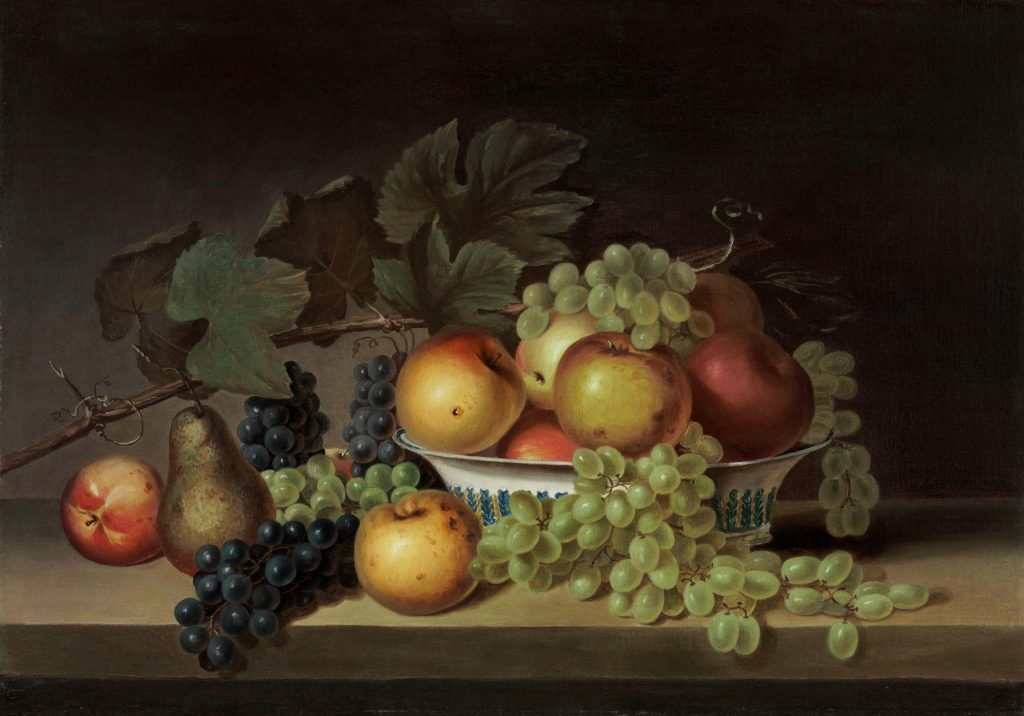
Anna Peale Sellers, Still Life with Oval China Bowl, after James Peale, c. 1875. Philadelphia Museum of Art, Gift of the McNeil Americana Collection, 2010, 2010-70-2.
Anna Peale Sellers (1824-1905) was Charles Willson Peale’s granddaughter through his daughter Sophonisba Angusciola (not an artist). She painted both still lifes and portraits. With the plethora of successful older family members available to her, Sellers had no end of potential teachers. She also had a lot of possible models to emulate.
The best-known examples of Sellers’s work, including a still life in the Philadelphia Museum of Art, a rural landscape scene at the La Salle University Art Museum, and a double portrait that sold at auction in 2014, are copies of works by her better-known male family members. That’s not necessarily a bad thing. Many painters copy or re-interpret works by more established artists during their learning process. Several female artists of the Peale family also painted copies of popular works by other family members for sale on the market. For example, Harriet Cany Peale and her husband Rembrandt Peale worked together to make copies of his popular portraits of George Washington. Unfortunately, we don’t have any known examples of Sellers copying works by her female relatives.
Mary Jane Peale
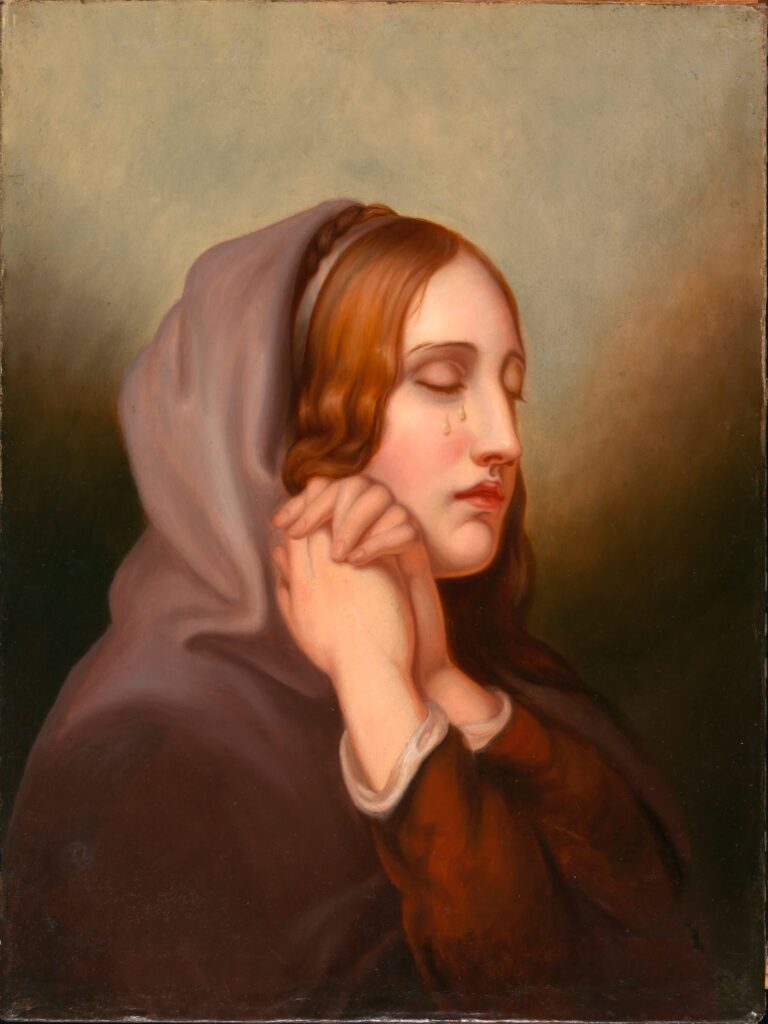
Mary Jane Peale, Pearl of Grief, 1855, Smithsonian American Art Museum, Washington, DC, USA.
Mary Jane Peale (1827-1902) was the last female artist of the Peale family – the last artist of the whole family, in fact. She was Charles Willson Peale’s granddaughter through his son Rubens. Despite his name, her father was not among the more prolific artists in his family. He primarily focused on running the family’s museums. Many believe that Mary Jane taught her father to paint and collaborated on some of the works typically attributed to him.
Mary Jane’s diaries and letters, now owned by the American Philosophical Society, make it clear that she had a lot of training and encouragement from her family members, specifically her Uncle Rembrandt and cousin Sarah Miriam.
Mary Jane Peale dedicated her life to painting, travel, and intellectual pursuits. She made both still life paintings and figurative works, including portraits. Her paintings are in several museums, including four in the Philadelphia Museum of Art. Because her known works date throughout her lengthy career, it’s possible to see how her artistic abilities developed over time.
Female Artists of the Peale Family, An Invisible Legacy
While researching this article, I was shocked by the scarcity of information available about female artists of the Peale family. The pickings are very slim, even within resources dedicated to the Peale family or to women artists. Except for the more famous Sarah Miriam, Anna Claypoole, and Harriet Cany, there are only a few works attributed to each of these women at most. Some artists don’t even have a single work confirmed to her name.
Anyone interested in historical female artists is unfortunately much too familiar with this state of affairs. This case is even more complex than the average since most of the artistic Peales, both male and female, pursued the same genres, worked closely together in similar styles, and even sometimes chose the same subjects. Since they very often painted each other, who is portrayed and who did the portraying can get confusing. Additionally, I strongly suspect that works by female artists of the Peale family often remain hidden via attributions to male relatives. I hope that these women’s role in the fascinating Peale artistic dynasty will come further to light in the future.
